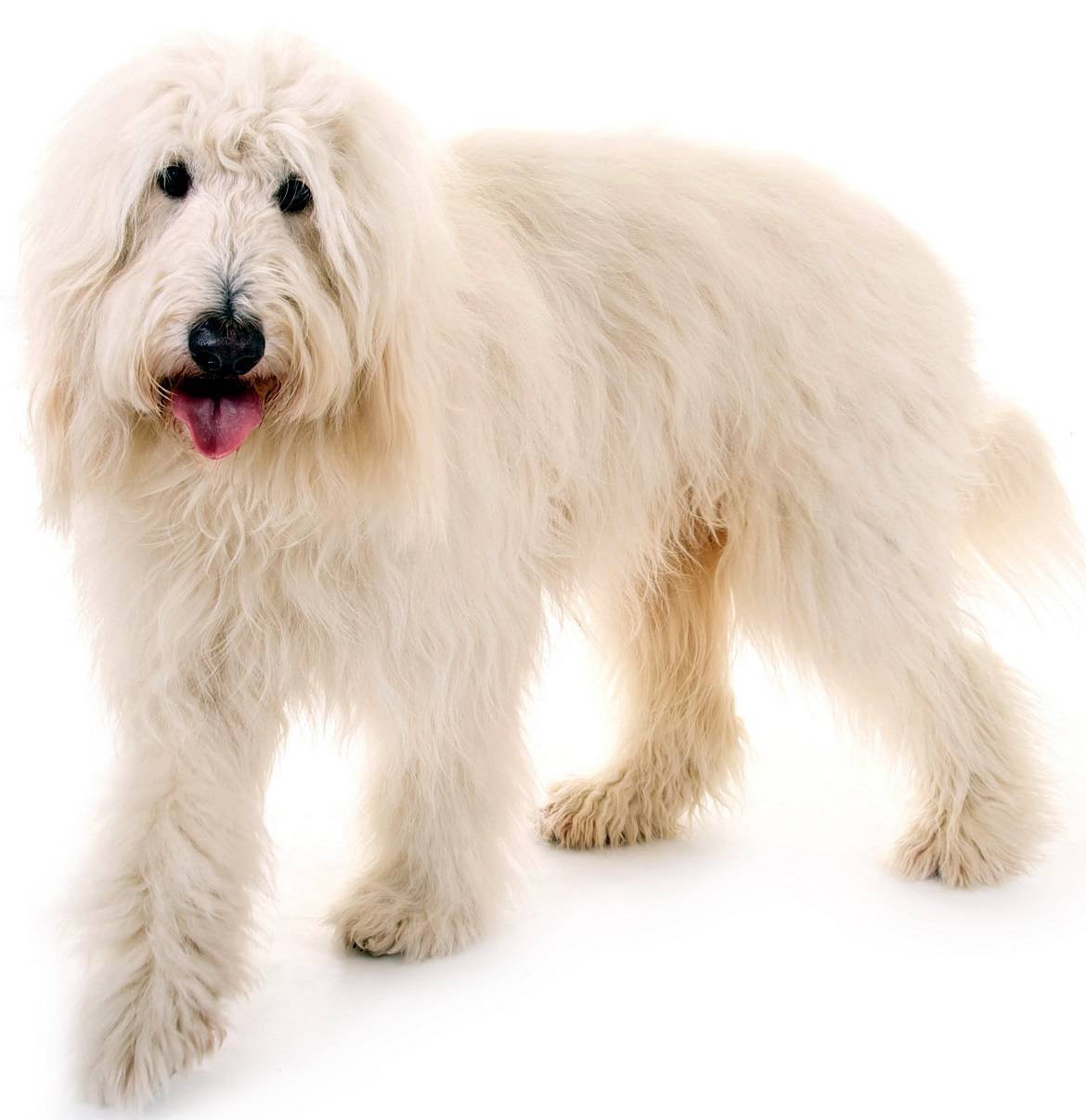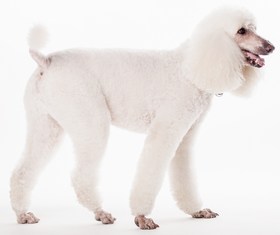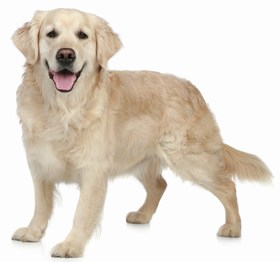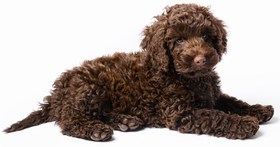
Paws ‘N’ Pups Quickview
Size
| Energy Level
| Trainability
| Paws ‘N’ Pups Rank
|
Characteristics
| Physical Characteristics: Energy Level: Moderate – High Since the Goldendoodle is a cross between two breeds that are quite different, the Golden Retriever and the Poodle, their sizes can vary quite a bit.
| Colors: The Goldendoodle is seen in shades ranging from creams to reds and browns; even black, merle and parti-colors are seen. The most common colors are similar to those of the Poodle. |
| Health & Longevity: 10-15 years Breeders screen for the following conditions:
Epilepsy is seen, as are allergies, ear infections, and bloat (gastric torsion, a life-threatening situation if immediate veterinary intervention is not attained). | |
Temperament & Train-ability
One of the more recent additions to the “designer dog” market, the Goldendoodle experiences the same amount of variance as the Labradoodle, which has been bred since the 1980’s. In appearance and temperament, some Goldendoodles will take after Goldens more strongly while others will take after Poodles. Very few are a perfect combination of desired traits in each breed. Generally playful, gentle and accepting, the Goldendoodle usually makes a good family dog, and are very affectionate. Often well suited to novice dog owners, the Goldendoodle also usually gets on well with other dogs and strangers, making them less than effective as watchdogs. Talk to as many breeders as possible, and meet their adult dogs; selecting a breeder is an important factor in finding a dog that matches your lifestyle.
The amount of exercise and stimulation a Goldendoodle needs is variable; many are satisfied with 30 minutes a day of good exercise and mental stimulation. Goldendoodles tend to be “Velcro dogs”, needing the company of their people; they are unsuited to spending long hours alone and can develop separation anxiety or destructive behaviors if left alone too much. Some Goldendoodles can do well in apartments or condos, as they are generally calm indoors after they’ve been exercised.
One of the biggest misconceptions about this cross is that they are hypoallergenic. Although the desire to produce a hypoallergenic guide dog was the reason for the development of this breed, even today, most puppies produced do not possess this characteristic. Many times this fact is not obvious until after the dog’s adult coat comes in. This has resulted in heartbreak for many families, who must give up their young dogs when they realize their adult coat is not hypoallergenic. If being hypoallergenic is a deal-breaker for you, acquiring an adult dog that you know you can tolerate is the best course of action.
Training a Goldendoodle is generally easy, as they tend to be intelligent, social and willing. Many are employed at guide and assist dogs, and others compete in dog sports like obedience or agility. It is recommended that your Goldendoodle be trained early to enjoy being groomed. Early and ongoing socialization is necessary.
Grooming
The Goldendoodle coat can vary as much as every other trait; three coat types are seen:
- Straight, which is closer to a Golden’s coat
- Wavy, which is somewhere between a Golden and a Poodle coat
- Curly, which is more like a Poodle coat
All Goldendoodle coat types are double coats; they carry an undercoat beneath the topcoat. It was hoped that this cross would produce consistently hypoallergenic dogs. Despite what many breeders claim, that has not proven to be the case. While some people with allergies are able to tolerate them, many others cannot. Some shed, although usually less than a Golden as the dead coat tends to stick in the outer coat rather than falling off the dog. Weekly brushing for the straight and wavy coats should be sufficient, but the curly coats are much more demanding; these coats have the same grooming requirements as the poodle. Many owners opt to have them clipped short for easier maintenance.
Ears must be cleaned regularly, and toenails should be trimmed; even if your Goldendoodle wears their nails down, you will want to maintain the ability to handle their feet, especially useful as they age, when wear to the nails typically slows down. Teeth must also be checked and cleaned regularly.
Diet
Because there is so much variety still in this cross, feeding amounts will vary just as much. The amount fed will vary depending on size of dog, age, activity level, and type of food fed. Look to the average size dog a breeder produces and use their feeding recommendations. A high-quality diet will give your Goldendoodle the best quality of life. Where allergies exist, some experimentation to find a food your dog can tolerate may be needed. A constant supply of fresh, clean water must always be available.
Looking for a Goldendoodle?
 Find A Goldendoodle Breeder |  Goldendoodle Puppies For Sale |  Adopt A Goldendoodle |
Cost
Goldendoodle prices range between $1,200-$1,800, sometimes going as high as $3,000-$4,000 for “rare” colors. Goldendoodle rescue organizations offer another option, where lovely dogs needing a home can be found; adoption fees vary widely, but are generally in the $200-$500 range.
Ongoing expenditures include the typical supplies, food, and regular vet visits. Additionally, you may need an extra supply of chew and food-dispensing toys and training classes to keep your busy Goldendoodle occupied.
Paws ‘N’ Pups Ranking
Paws ‘N’ Pups ranks every breed out of 4 with 1 being easiest to integrate into your life and 4 being the toughest – The lower the ranking the better.
Ranking takes into account a few basic factors such as cost, skill level needed, high vs. low maintenance, and how critical regular training is to success. The Goldendoodle rates a 2.5; their cost is on the high side, and their grooming requirements can be considerable.
Breeds Similar To Goldendoodle
 Golden Retriever |  Poodle |  Labrador Retriever |  Labradoodle |




